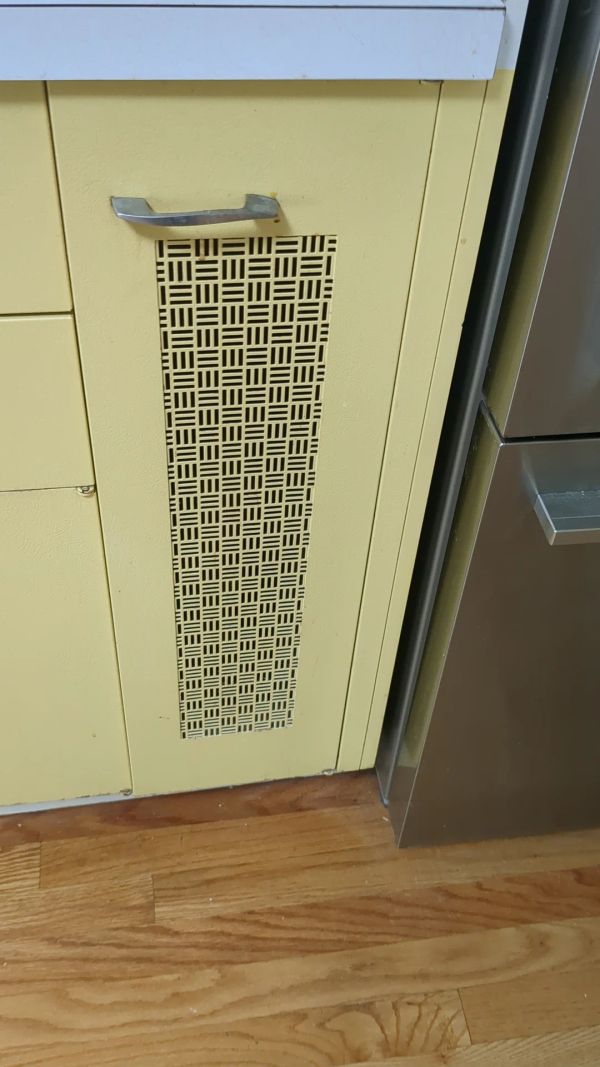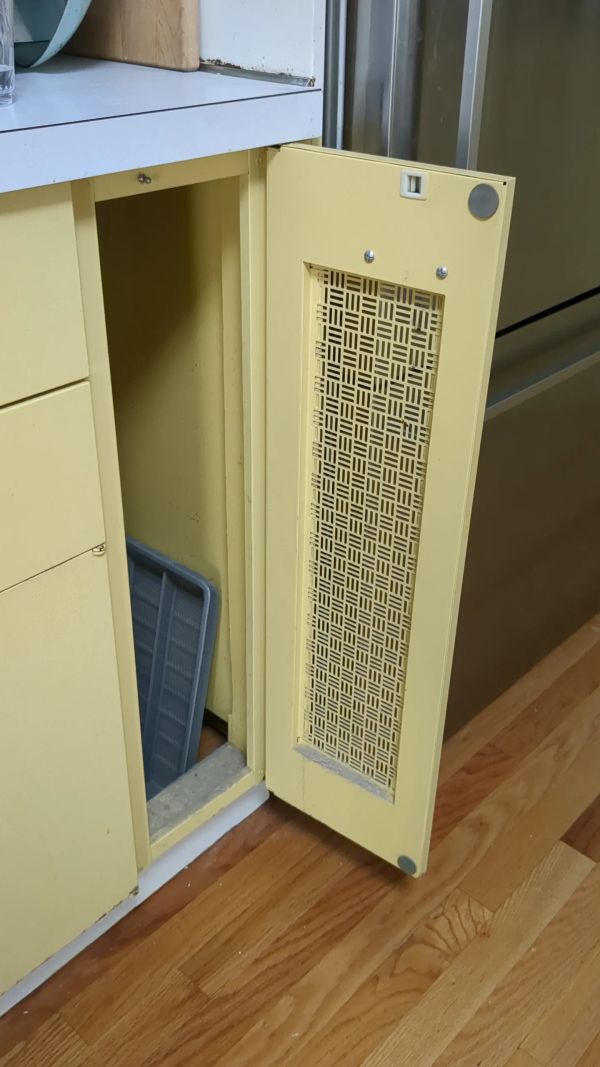In the heart of a home built during the Truman era, there’s a special piece of furniture that holds memories and secrets from the past. It’s a gleaming metal cabinet, standing tall and proud, just as it did when it was first introduced in 1951. Back then, this cabinet was a marvel of modernity, promising convenience and a touch of luxury during the post-war boom.

But what makes this cabinet so unique? Step closer and take a look at its vented doors. They may seem like a decorative touch, but they actually serve a practical purpose that was essential in the kitchens of the past.
Back in the vibrant 70s, the kitchen was the heart and soul of the home. It was a place where color and life thrived. Yet, this steadfast metal cabinet remained, its vented doors quietly puzzling those who wondered about their purpose.

The answer lies in the rhythms of a bygone domestic life. These metal doors, carefully crafted with precise patterns of vents, were designed to fulfill a rather quaint but vital function: drying kitchen towels.
Imagine a simpler time when kitchen towels were hung artfully on these metal racks, swaying gently as the bustling activity of family life carried on around them. The vented doors allowed air to circulate, ensuring that the towels, whether they were used to wipe up spills or dry clean dishes, could breathe and dry quickly, ready for their next use.

Today, these vintage cabinets stand as charming relics of the past. They remind us of the days when families gathered to share meals and stories, and a kitchen towel, crisply dried and neatly folded, was a small but significant part of everyday life.
This kitchen, with its sturdy metal cabinet, is more than just a space for cooking and eating. It’s a time capsule, preserving the memories and traditions of the past. Now, it dries not only towels but also our sentimental longing for yesteryear, warming them in the glow of cherished memories, just as it did half a century ago.





